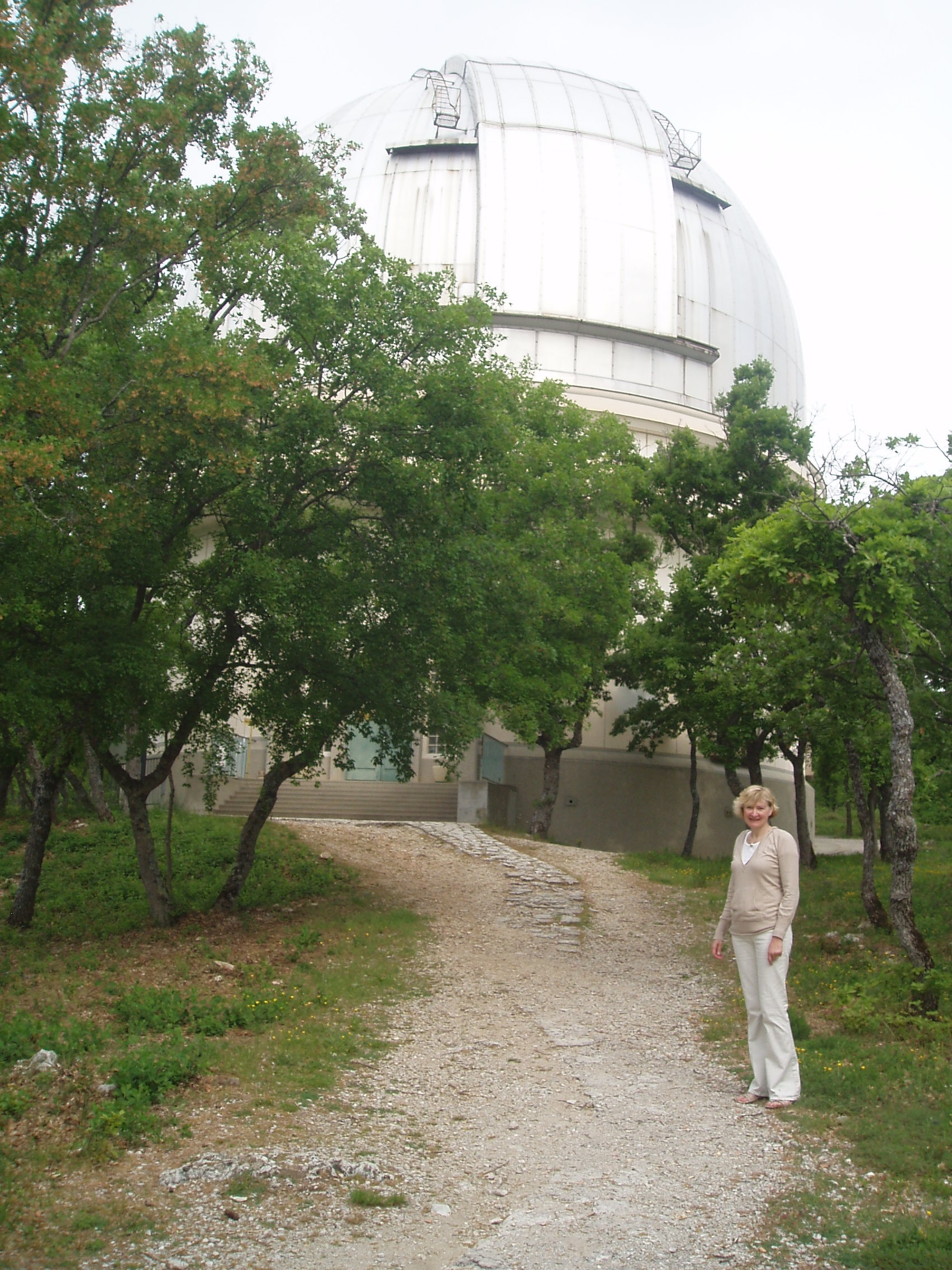-
Faulkes Telescope Project Privacy Policy
First EU-HOU Comenius teacher training workshop – a teacher’s point of view
Glenlola Collegiate
Following the successful Comeniu-funded EU-HOU teacher training workshop in France on 7th-10th May, Jacquie Milligan, a  regular Faulkes Telescope user who attended the workshop, had this to say about the weekend:
regular Faulkes Telescope user who attended the workshop, had this to say about the weekend:
“The Observatoire Haute Provence (OHP) was the setting for an excellent Teacher Training workshop from 7 – 10 May 2009, under the sponsorship of the EU ‘Hands on Universe’ programme. We had two full-on days of working through various activities that would be immediately accessible by pupils. One of my ideal ‘outcomes’ for any teacher training event is the provision of real strategies that are useful for delivering the curriculum without much ‘tweaking’. The HOU workshop provided many such opportunities; for example, the use of the SalsaJ programme to ‘stack’ and ‘animate’ sequential solar images provides a great animation that any KS3 student can perform. The task can help pupils to develop skills in ICT, managing information and analysing data. From this, pupils can progress at their own pace/level of interest to determine the rotation period of the Sun or the actual size of prominences or flares. This leads on to the understanding of relative sizes of objects in the Solar System, when pupils can find out how many ‘Earths’ could tuck underneath a solar prominence! This activity can be found at: http://www.euhou.net/
My favourite activity was one lead by our own Dr Sarah Roberts, who guided teachers through the Faulkes resources for learning about ‘The Life Cycle of Stars’ and the HR-diagram, before setting us loose on a wonderfully interactive lesson to produce HR graphs from star clusters (both open and globular clusters) by analysing FITS data. Pupils could then compare the diagrams obtained from the different types of star cluster to make a conclusion about the types of stars present in each. I am definitely a beginner in the use of SalsaJ (being a mere Biologist) but I had a great sense of achievement after completing this activity. If I can do it, my pupils will have no problem! I plan to use this activity to allow my students to progress in their knowledge of star life cycles. Ideally they would process their own Faulkes data, but initially I will trial the activity using the FITS files already present on the website. The activity can be downloaded from: http://resources.faulkes-telescope.com/course/view.php?id=30 and from the HOU website: http://www.euhou.net/ – ‘Life cycle of stars – plotting your own HR diagram’.
A highlight of the course at OHP was getting to see the 193cm telescope where Mayor and Queloz discovered the first exoplanet in 1995. Naturally Jeremy (the other teacher from the UK) and I had to get our photo taken in front of the dome. The telescope and I have one thing in common – we both saw ‘first light’ in 1958!”
Posted in Schools
